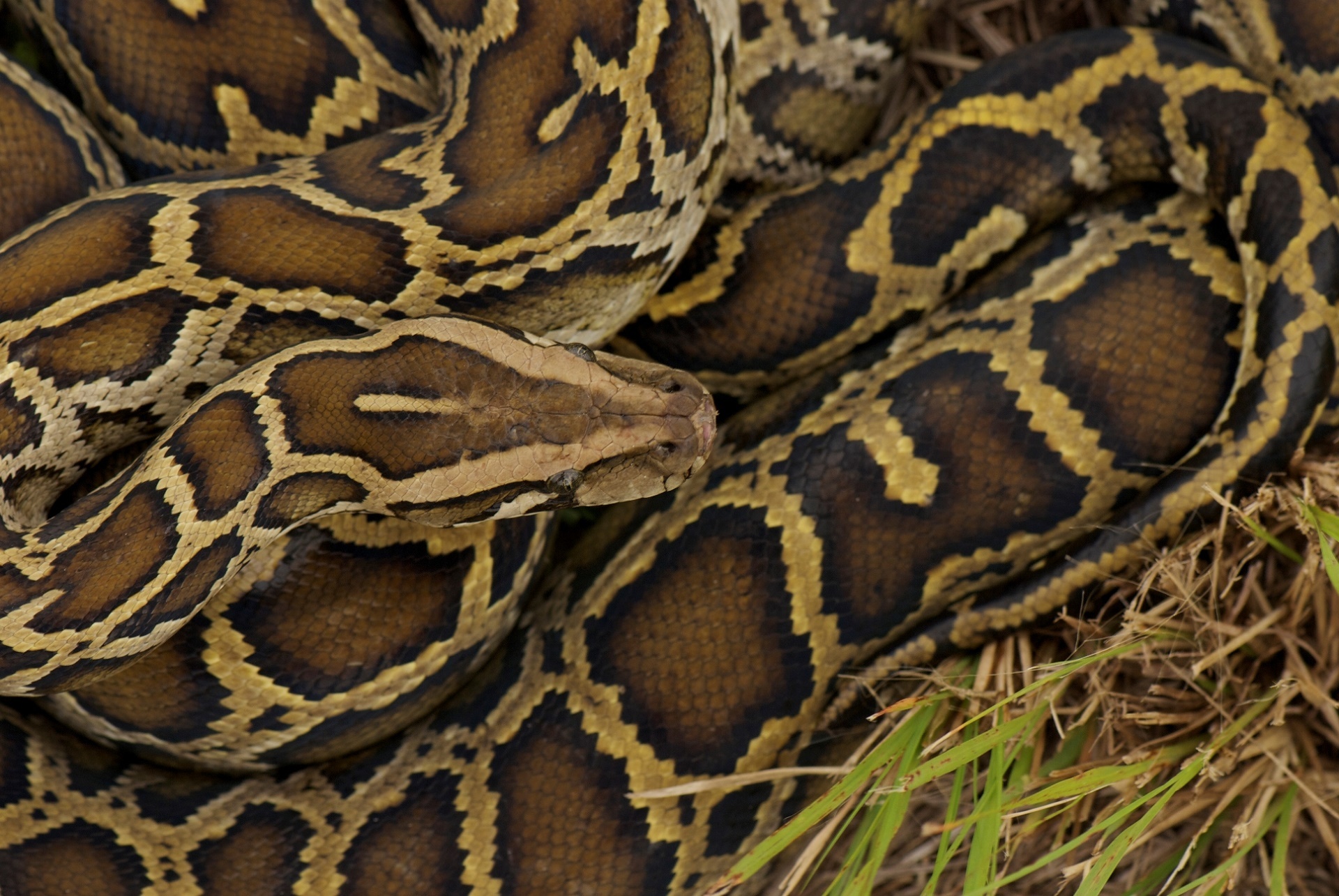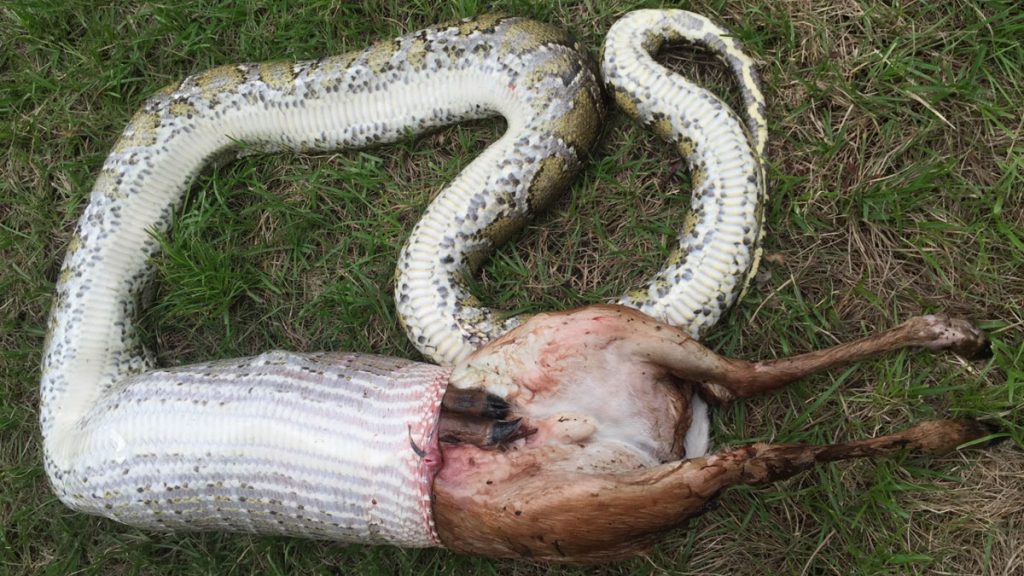
Florida’s battle against invasive species may have just gotten a lot tougher, as a new type hybrid snake was recently found lurking in the Everglades.
A recent US Geological Survey (USGS) study on the genetics of invasive pythons has revealed that a number of the snakes in the Everglades are actually a hybrid between two species orginally from Southeast Asia — the Burmese python and Indian rock python.
Burmese pythons, which have colonized the state in recent decades, are colossal constrictors generally found near water, while the agile, more aggressive Indian rock python spends the majority of its time on high ground. The resulting hybrid could lead to something of a “super snake,” a well-adapted reptile suited for both swamps and dry land. And, in fact, South Florida’s Burmese pythons have been spotted in both environments.

“When two species come together they each have a unique set of genetic traits and characteristics they use to increase their survival and their unique habitats and environments,” USGS geneticist Margaret Hunter told the Guardian. “You bring these different traits together and sometimes the best of those traits will be selected in the offspring. That allows for the best of both worlds in the Everglades, it helps them to adapt to this new ecosystem potentially more rapidly.”
This phenomenon, where the best traits from both parents are enhanced in the hybrid offspring, is known as “hybrid vigor”. What this means for the snakes in the Everglades, though, is still unclear.
This isn’t the first time the idea of a super snake in Florida has come up. Back in 2010, reports of a possible hybrid between Burmese pythons and African rock pythons — which have been known to attack humans — stoked fears that it could give rise to an unusually aggressive super-predator.
But as alarming as this all sounds, the researchers say that a new reptilian terror isn’t necessarily taking over the state. In fact, they believe the interbreeding between the Burmese and Indian pythons likely happened before they became established in the area. Still, the recent findings suggest that it will likely be even more difficult to reduce the already staggering python population than scientists had originally thought.
Video:

